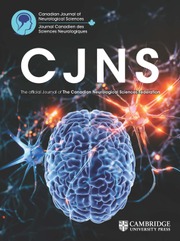Article contents
Comparing Cerebellar and Motor Cortical Activity in Reaching and Grasping
Published online by Cambridge University Press: 18 September 2015
Abstract:
The activity of single cells in the cerebellar and motor cortex of awake monkeys was recorded during separate studies of whole-arm reaching movements and during the application of force-pulse perturbations to handheld objects. Two general observations about the contribution of the cerebellum to the control of movement emerge from the data. The first, derived from the study of whole arm reaching, suggests that although both the motor cortex and cerebellum generate a signal related to movement direction, the cerebellar signal is less precise and varies from trial to trial even when the movement kinematics remain unchanged. The second observation, derived from the study of predictable perturbations of a hand-held object, indicates that cerebellar cortical neurons better reflect preparatory motor strategies formed from the anticipation of cutaneous and proprioceptive stimuli acquired by previous experience. In spite of strong relations to grip force and receptive fields stimulated by preparatory grip forces increase, the neurons of the percentral motor cortex showed very little anticipatory activity compared with either the premotor areas or the cerebellum.
- Type
- Abstract
- Information
- Copyright
- Copyright © Canadian Neurological Sciences Federation 1993
References
REFERENCES
- 13
- Cited by


